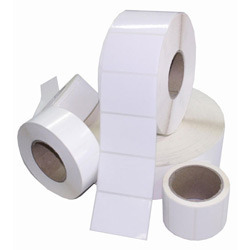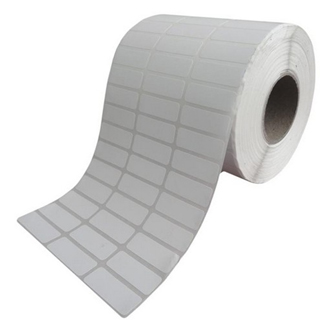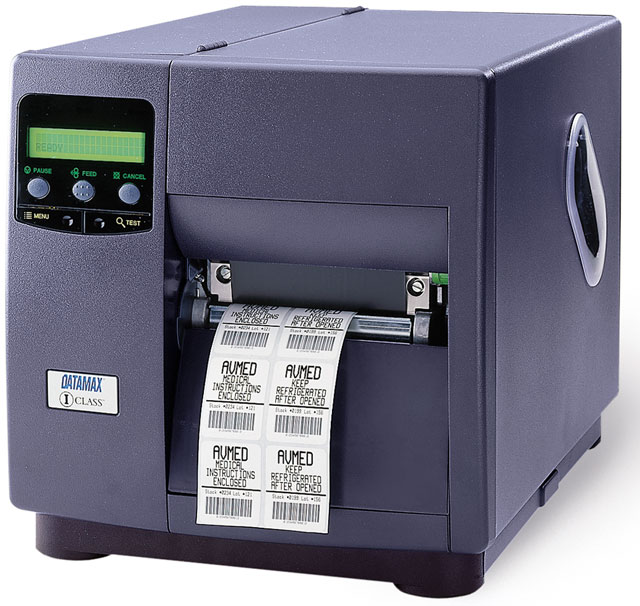by Administrator | May 15, 2025 | Uncategorized
Datamark UK Ltd is excited to announce its outstanding capability in providing an extensive range of high-quality Ink-Jet Printer Labels specifically designed for use on the expanding range of Colour Ink-Jet Printers. Our commitment to excellence ensures that our labels meet the highest standards of performance, durability, and reliability. As a trusted name in the industry, Datamark UK Ltd offers a variety of Quality Ink-Jet Printer Labels that cater to diverse printing needs. Our labels are engineered to deliver vibrant, sharp, and consistent prints, making them ideal for a wide range of applications, including product labelling, shipping, and office use. Key Features of Datamark UK Ltd Ink-Jet Printer Labels: Superior Quality: Our labels are made from top-grade materials that ensure long-lasting performance and resistance to smudging and fading. Compatibility: Designed to work seamlessly with all major Colour Ink-Jet Printers, our labels provide hassle-free printing experiences. Versatility: Available in various sizes, shapes, and finishes, our labels are perfect for a multitude of applications, from professional use to personal projects. Customer Testimonials: “Datamark UK Ltd’s Ink-Jet Printer Labels have transformed our labelling process. The print quality is exceptional, and the labels are incredibly durable.” – Sarah J., Office Manager “We rely on Datamark UK Ltd for all our labelling needs. Their commitment to quality and customer service is unmatched.” – John M., Small Business Owner About Datamark UK Ltd: Datamark is a leading supplier of high-quality labelling solutions. With years of expertise and a dedication to innovation, we provide our customers with products that enhance productivity and efficiency. Our mission is to deliver top tier labelling solutions that meet the evolving...
by Administrator | May 15, 2025 | Uncategorized
Datamark, a leading provider of labelling solutions, also offer an extensive range of Quality Thermal Transfer Ribbons. As a result, this enables us to meet the growing demands of various industries for high-quality, durable, and versatile in-house printing solutions. Comprehensive Range of Ribbons Datamark’s range of quality thermal transfer ribbons allow them to cater to an extremely large range of auto-ID labelling requirements, including some required for use in extremely harsh environments. The product line includes: Wax Ribbons: Ideal for standard, general-purpose printing on paper labels. Wax/Resin Ribbons: Perfect for applications requiring a balance of durability and print quality on both paper and synthetic labels. Resin Ribbons: Designed for high-performance printing on synthetic labels, providing excellent resistance to chemicals, heat, and abrasion. High Temperature Ribbons: Designed to work with High-Temperature Materials up to 1200°C and to deliver a readable product on HeatProof Tags for Galvanising product tracking. Variety of Colours While black remains the most popular choice, Datamark also offer a range of Colour TT Ribbons. This variety ensures that customers can find the perfect ribbon to match their specific branding and labelling needs. Quality and Reliability Datamark sources its ribbons from several renowned manufacturers including Armor, Union Chemicar and TTS, ensuring each product meets the high standards of quality and reliability we expect. Customers can trust that their labels will remain clear and legible, even in very challenging environments. Customer-Centric Approach “At Datamark, we are committed to providing our customers with the best possible products and services,” said Mark Newton (Sales Manager). “Our range of quality thermal transfer ribbons is a testament to our dedication to meeting the...
by Administrator | May 15, 2025 | Uncategorized
Todays fast-paced world of logistics and distribution, requires precision and reliability. Labels need to scan first time, every time, ensuring seamless operations and avoiding costly delays. Datamark delivers with their comprehensive range of quality labels, thermal transfer ribbons, and printers designed to meet the highest industry standards. Unmatched Label Quality: Datamark manufactures an extensive range of quality plain, printed, and specialty labels. If its flexographic printed labels for improved product branding or thermal transfer bureau printed labels for operational efficiency what’s required, then Datamark ensures each label we produce, provides our customers the best solution to their needs. To sum it up, our labels are designed to withstand various environmental conditions, ensuring durability and consistent barcode readability. Premium Thermal Transfer Ribbons: A label is only as good as the print quality it carries, which at Datamark we understand all to well. The wide range of black or colour thermal transfer ribbons we supply are available in wax, wax/resin, and resin formulations. This enables us to cater to a wide range of printing needs. Whether companies require cost-effective wax ribbons for standard applications or high-performance resin ribbons for industrial durability, Datamark provides solutions that guarantee sharp, long-lasting print results. State-of-the-Art Printers: To complement our quality labels and ribbons, Datamark offers cutting-edge thermal transfer and direct thermal printers. These printers deliver high-speed, high-precision printing, making them ideal for logistics and distribution applications. With this advanced printer technology, businesses can rely on Datamark’s printers to produce clear, scannable labels that enhance operational efficiency. Why Choose Datamark UK Ltd?: • Firstly; Industry Expertise – Years of experience in label manufacturing and printing solutions....

by Administrator | May 1, 2016 | Uncategorized
Datamark UK Ltd are coming up to the end of the first year of supplying one of our biggest & newest customers with a range of Plain Labels, which has seen a very successful working relationship develop between the two companies. The advantage in working with Datamark is our exceptional service in supply of this companies label requirements, delivering next day* following receipt of order (*subject to Call Off orders in before 14.00pm). Our customer has been very impressed with not only the products supplied, the excellent customer service we offer but our understanding of their...

by Administrator | May 1, 2016 | Uncategorized
If Carlsberg Manufactured Self Adhesive Label & Tag Solutions or Supplied Labeling Systems, then would this be what’s on offer: Datamark UK Ltd – Quality Self Adhesive Labels & Tag Solutions; Quality Self Adhesive Label & Tag Solutions from a Manufacturer who pride themselves in delivering on time. Datamark manufacture & supply Self Adhesive Label & Tag Solutions using a variety of materials for even the most demanding projects. These include materials which perform in extremely low temperatures (-210℃) such as Cryogenic Label Applications & high temperatures (1200℃) for the Labeling of extremely hot materials providing traceability through the manufacturing process. One such new product is currently undergoing successful testing for the tracking of products being put through the extremely rigorous Galvanising Processes. Our key objective at Datamark is to provide our customers & new prospects alike, with a range of Self Adhesive Label & Tag solutions, which we deliver on time to these customers and new prospects 99.95% of the time. At Datamark our Customer Service support from our internal and external sales team is second to none, and we like to assist our customers in the management of their labels. We provide a wealth of knowledge and experience within the Self Adhesive Label & Tag Solutions market totalling something like 75 plus years combined experience. Quality Label Print Solutions Datamark offer a range of Thermal Transfer & Direct Thermal Printers supporting our range of Self Adhesive Label & Tag Solutions. These include the TSC Printronix (Now a TSC Silver Power Partner) and GoDEX range of products. Part of this range includes a wide variety of Mobile Print...

by Administrator | May 1, 2016 | Uncategorized
Datamark (UK) Ltd Following a call from a customer at 11.30am this morning who had issues with his Datamax i Class Printer, we offered a solution. Our clients printer had packed up & he was unable to label up product for dispatch out to his customers. He wanted to replace the defective Datamax i Class printer ASAP so contacted us for our help. As a result of our response the customer got his replacement Datamax i Class Printer the very next day. We were able to offer the client the exact printer make & model he required at a competitive price. The customer was delighted, stating he will always look to Datamark for all his print needs. Supporting our customers, supplying what they need, when they need it & going the extra mile is our Motto. Datamark supply not only labels & thermal transfer ribbons, but a range of print systems & ink-jet coding solutions. We can supply pretty much any make of thermal transfer printer on the market. The range of printers we offer includes Zebra, GoDEX, Citizen, Brother, Datamax, Intermec, CAB & Toshiba. Do you require any label print system, print n’apply solution or label applicator then contact Datamark UK Ltd. We provide quality products, rapid delivery & first class customer service. Contact Datamark on +44 (0)1482 506560 or email us at sales@datamarkuk.com & we will ensure we deliver the right solution for...






